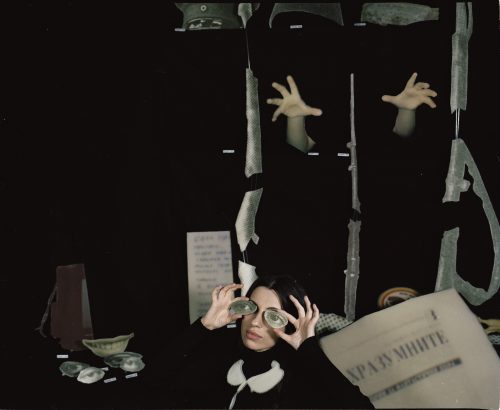
Lesia Pčołka, Uladzimir Hramovich
By Law
Project Info
- 💙 Basement Studio, Olomouc
- 💚 Radka Částková, Hana Kurková, Anna Sýsová
- 🖤 Lesia Pčołka, Uladzimir Hramovich
- 💛 Kateřina Holbová, Tomáš Jakubec
Share on

By Law, Lesia Pčołka and Uladzimir Hramovich, Basement Studio, Olomouc
Advertisement








Lesia Pčołka and Uladzimir Hramovich came to Olomouc to work on their collaborative project By Law during a week-long residency. Its bases lie in the uncertainty with which artists in exile try to cope. Encountering the sharp outlines of territorial borders, they capture the rigidity of bureaucratic processes.
In their installation, materials that can be easily found are used and reused, also allowing for easy transportation from place to place. The exhibtion in Basement Studio consists of plastic flowers that the artists brought with them from Berlin in their suitcase. What transforms and what is lost along the way? What, on the other hand, is added to the new setting?
The bridal bouquet bears the shape of the countries where the couple settled after fleeing Belarus following the 2020-2021 protests. The everyday symbolism of detachable flowers takes on a new meaning when it is able to transfer the memory imprint of places and situations and thus create a strong connection between them.
The individual flowers in the gallery now grow out of heavy and rough pieces of concrete blocks. These were found by the artists on their walk through Olomouc, lying in a meadow overgrown with grass, hidden like the skeleton of some prehistoric animal. Beside the concrete grew a bunch of strawberry plants.
Lesia Pčołka and Uladzimir Hramovich faced persecution for their participation in anti-governmental demonstrations and were forced to leave their country. They now live and work in Berlin.
Lesia Pčołka works with the medium of photography, founding VEHA, an open online archive that preserves a visual history of day-to-day life in Belarus. She has published a book Descent into the Marsh, which situates the Belarusian protests in the global context of those in Hong Kong.
Uladzimir Hramovich explores the tension between past and present, engaging with monuments and memory rituals - structures inherently burdened with ideological meaning and embodied in material objects. The archival approach to creating and the principle of rendering the past visible through material is thus symptomatic of both artists.




